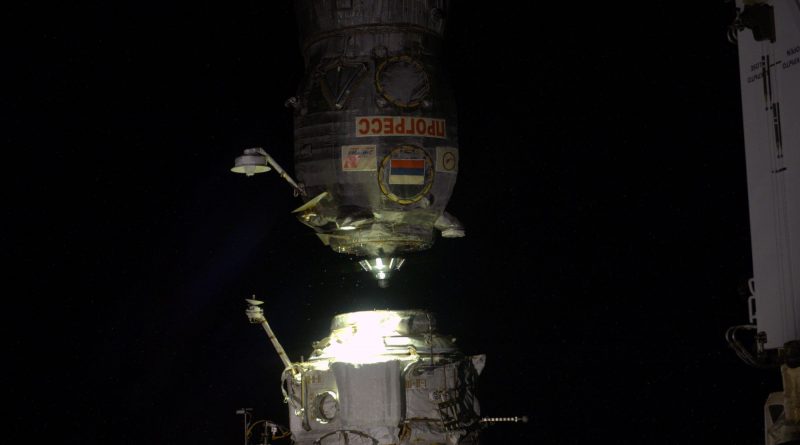Progress MS-03 Cargo Ship ends half-year Mission with fiery Re-Entry
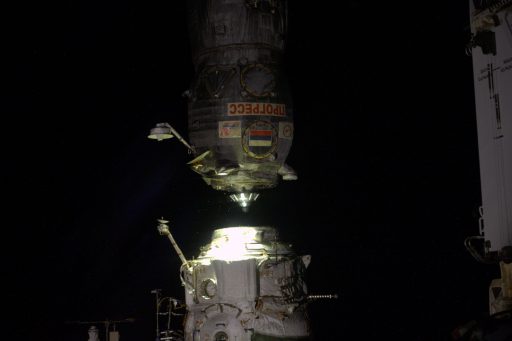
The Progress MS-03 cargo spacecraft closed out a six-and-a-half month mission this week, departing the International Space Station on Tuesday and re-entering the atmosphere over the Pacific Ocean a few hours later for safe disposal of the seven-metric-ton resupply ship.
Progress MS-03 blasted off from the Baikonur Cosmodrome on July 16, 2016 and received a smooth ride into orbit by its Soyuz U rocket as the second of three planned Russian cargo missions to ISS in 2016. Loaded with 2,400 Kilograms of food, fuel and supplies, Progress completed a two-day link-up with the orbiting complex, culminating in a fully automated docking to the Pirs module of the Space Station.
The Progress MS-03 mission carried to ISS 705 Kilograms of refueling propellant, 420 Kilograms of water and 50kg of pressurized gas to top up the Station’s atmosphere. Loaded into the pressurized cargo compartment were 1,230 Kilograms of supplies among which were food provisions, medical supplies, maintenance hardware for the Russian Segment and science equipment.
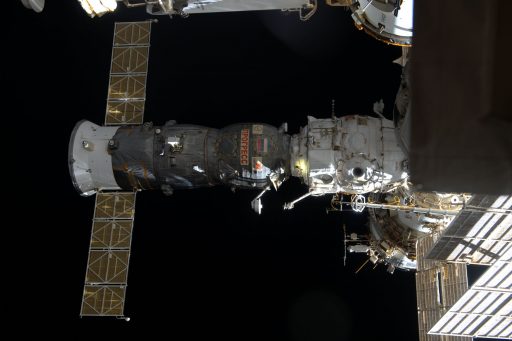
Over the course of several weeks, the Russian crew members moved cargo from the Progress over to ISS and completed transfers of water and repressurized the Station’s atmosphere. While Progress remained docked, it acted as the Station’s trash bin, receiving no-longer-needed items and liquid waste for eventual disposal via destructive re-entry.
Originally, Progress MS-03 was planned to leave the Station earlier in January, but the undocking was pushed due to the delay to the Progress MS-05 mission caused by the December 1st failure of the Soyuz U rocket carrying the MS-04 cargo craft. Keeping Progress docked as long as possible provided ISS with a secondary source of propulsion, available to assist when adjusting the Station’s orbit.
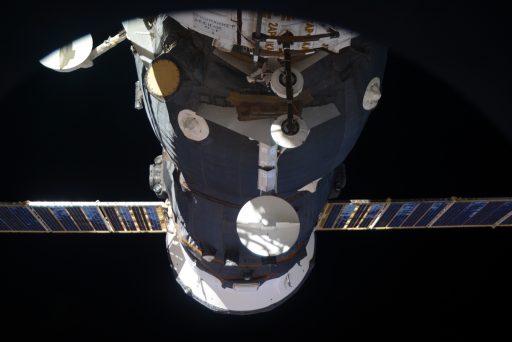
Coming close to its maximum mission duration, Progress was buttoned up for a January 31st undocking and re-entry with the Station’s crew in charge of getting the vehicle ready for departure by activating its systems and closing the hatches on both sides of the interface for the usual leak check before ground controllers could take over commanding for the undocking.
With ISS pitching over by 90 degrees to set up for a V-Bar departure, Progress entered its final undocking sequence five minutes ahead of separation with the activation of the vehicle’s docking mechanism prior to issuing the Undocking Command to initiate the opening of hooks on the Progress spacecraft to be structurally demated from the Pirs module.
Loaded springs pushed ISS and Progress apart at 14:25 UTC on Tuesday and the spacecraft drifted away passively for three minutes to open the gap to 20 meters ahead of the departure maneuver. Firing its DPO thrusters, Progress increased its opening rate to be able to move to a safe distance ahead of its deorbit burn.
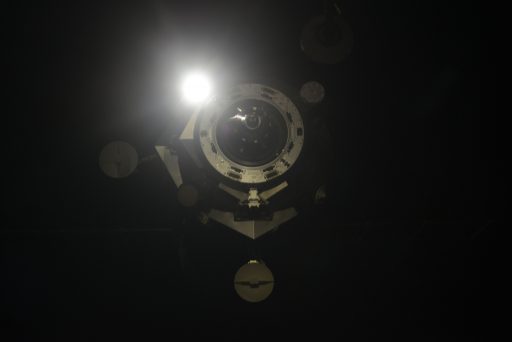
The KTDU-80 propulsion system fired up at 17:34 UTC for a 200-second, retrograde burn to slow the Progress by around 100 meters per second and set up a trajectory intercepting the atmosphere over a remote stretch of the Pacific Ocean. Upon hitting the dense layers of the atmosphere at 18:10 UTC, Progress was expected to disintegrate to a large extent with any surviving debris impacting 14 minutes later, far away from any inhabited land masses or frequented shipping lanes.
The departure of the Progress left ISS stripped of any cargo vehicles, a rather unusual situation given the busy schedule of missions to and from the complex. At present, only the Poisk and Rassvet modules are occupied by visiting vehicles, facilitating the Soyuz MS-02 and MS-03 spacecraft.
The next cargo vehicle to arrive at the Space Station will be the SpaceX Dragon, currently aiming for a February 14 liftoff atop a SpaceX Falcon 9 rocket, conducting its inaugural mission from Launch Complex 39A at the Kennedy Space Center. SpaceX has been extremely busy readying LC-39A for launch operations after SLC-40 received major damage in the September 1 testing accident that claimed the loss of the Falcon 9 029 launch vehicle and Amos-6 communications satellite. Depending on the status of pad readiness, the SpX-10 launch date remains subject to change.
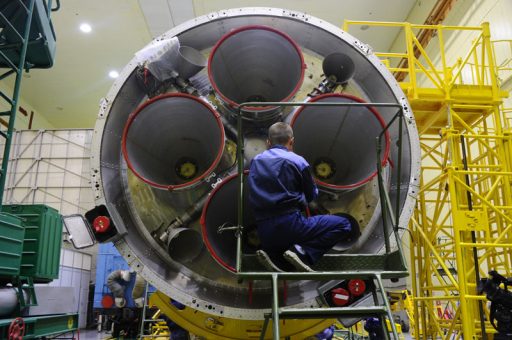
The next Progress mission is currently penciled in for launch on February 22, though this target is not set in stone either as the Russians work through their return to flight effort following the Progress MS-04 mishap. Work completed after the accident focused on the engine of the Soyuz rocket’s third stage as the likely cause of the failure, either due to ingestion of foreign particles or a fault within the high-pressure oxidizer pump.
Detailed inspections were completed on the Block I third stage for the Progress MS-05 mission and it was fitted with a new RD-0110 engine from a different manufacturing lot than the accident vehicle. The stage is currently being readied to ship back to Baikonur late next week for integration with the Soyuz U rocket that will take MS-05 into orbit for a two-day rendezvous with the Station for the delivery of 2,400kg of cargo. A backup date of March 1st is available should the mission miss its February 22 launch target.

